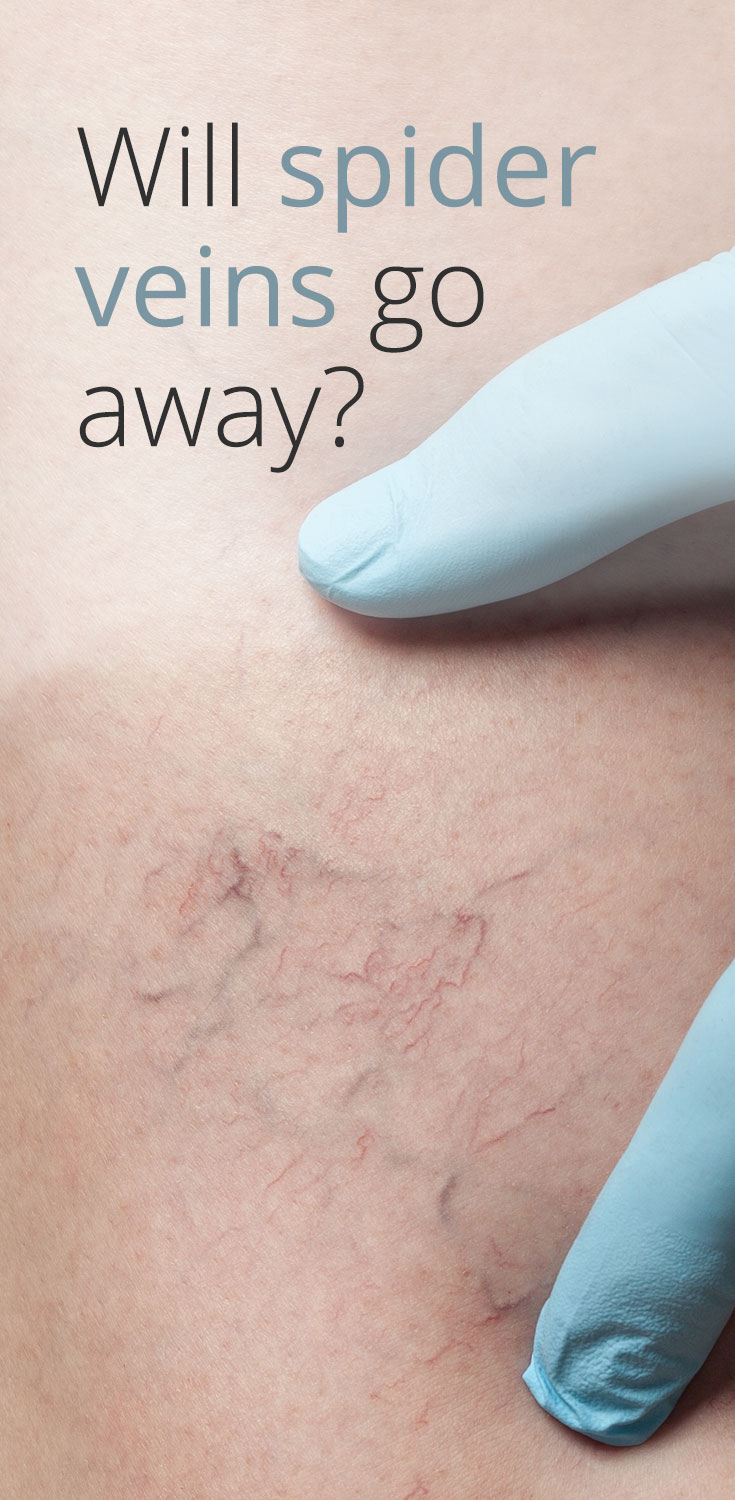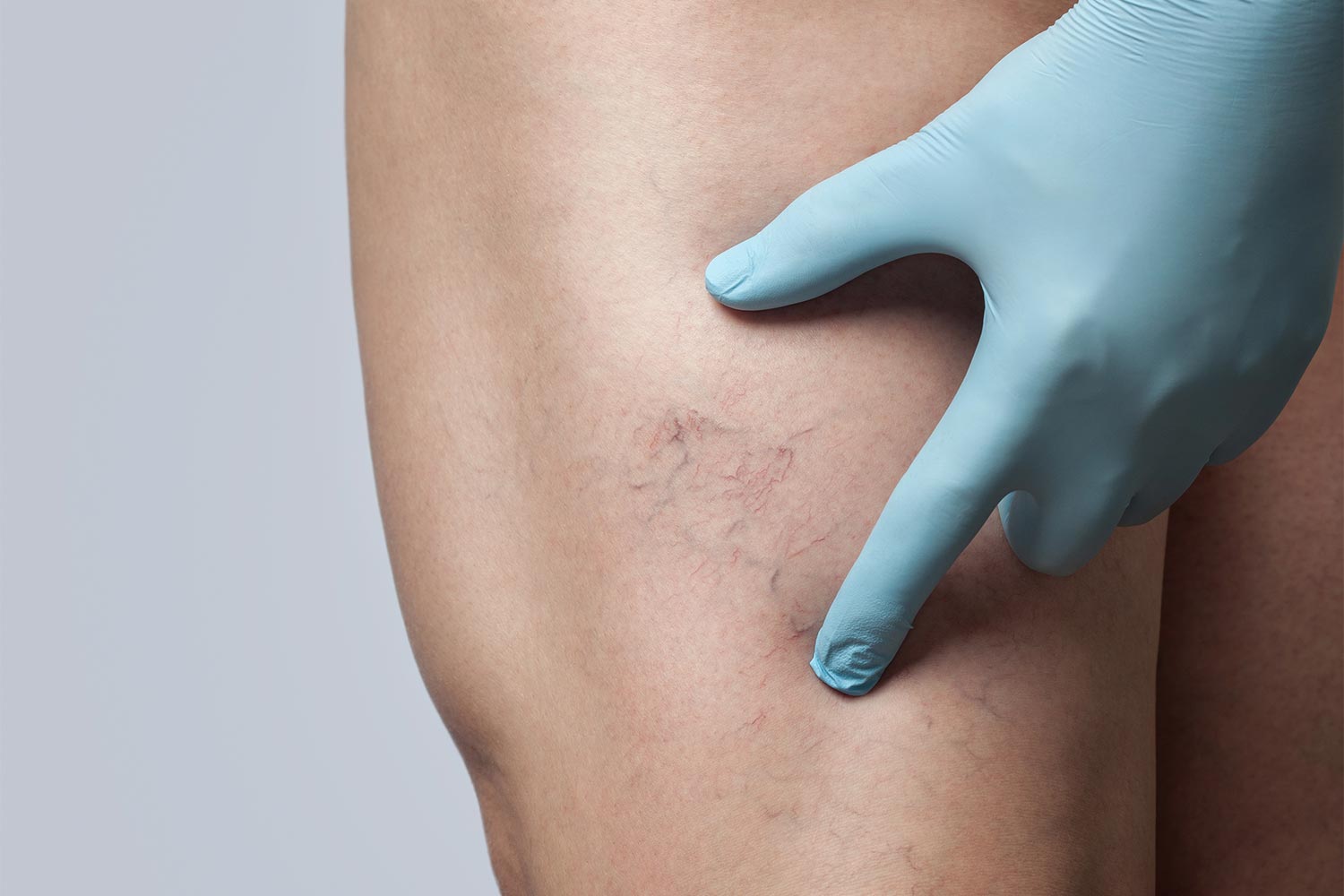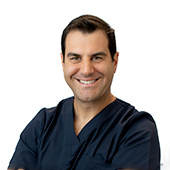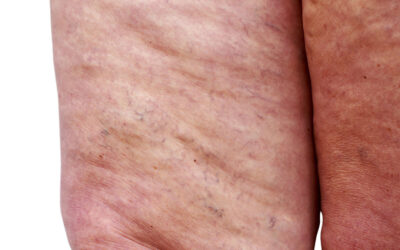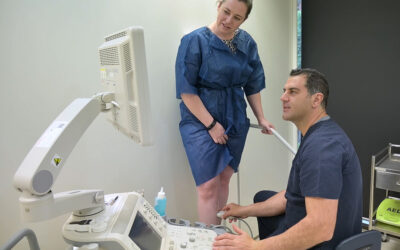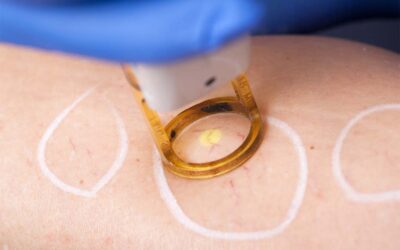Before we deal with this key question in-depth, it is useful to explain what spider veins are, and how they appear. The official medical term is telangiectasias and other descriptive terms often used are ‘broken capillaries’ or ‘thread veins’. This latter term offers a useful description as they thread out like tiny tree branches across many body areas from the feet or legs to the chest and face.
Spider veins are usually a flow-on effect from varicose veins situated in nearby blood vessels. Varicose veins are those bulgy, sometimes blue-tinted veins you can notice on the surface of the skin, although they also manifest themselves beneath the surface.
Why do varicose veins exist – and how do they lead to spider veins?
Throughout the interior of our veins, one-way stop valves prevent blood from leaking backward in the vein. Abnormal veins have inherently weak walls. There are many reasons vein walls can become weak. It could be a result of heredity, trauma, or the action of oestrogen over time. However, once the walls weaken, the veins will collect more and more blood, causing the vein to swell and damage the important one-way valves. Once the valves are damaged, blood will then flow in the opposite direction it is supposed to, causing blood to continue to pool in more veins.
This backflow from larger veins into smaller capillaries causes them to expand forming spider veins. That’s why it is important to treat the underlying problem, the larger varicose vein, and not just the spider veins by themselves. Backflow also leads to congestion of blood in the leg veins, which can cause symptoms such as pain, fatigue, heaviness, aching, burning, throbbing, cramping, and restless legs. Symptoms are often made worse by prolonged standing. The presence of a skin rash, small blue veins on the feet, skin discoloration, and ulcers usually indicate advancing vein problems. Severe varicose veins can compromise the nutrition of the skin and lead to eczema, inflammation or even ulceration of the lower legs. Treating the abnormal veins will lead to the improvement of the symptoms in the majority of patients.
Will spider veins disappear of their own accord?
Sufferers often hope that if they occur during pregnancy, during weight gain or overtime, that spider veins might then simply disappear post-pregnancy, through weight loss, or through the natural healing of the body. Sadly, they do not heal naturally. While weight loss can help relieve pressure on veins and exercising regularly can relieve swelling and encourage blood movement in your legs, both damage and symptoms will still be present. If the veins are pregnancy-related, some pressure relief may be experienced following birth. The vein damage remains, however, and pain or throbbing felt will not always reduce.
Therefore, the appearance, symptoms, and pain caused by both varicose and spider veins will need medical intervention to offer a resolution.
How can spider veins be removed?
Direct vision sclerotherapy is the most common treatment for spider veins. This is the name given to a treatment that uses an extremely fine needle to inject a special solution into spider veins. Once in place, this solution causes a spider vein to first collapse and then eventually harden over. Sclerosis is the medical term given to such a stiffening or hardening process. Once any veins have hardened over, your body, over a period of weeks and months, gradually absorbs them.
Here at Vein Health Clinic, we also undertake a duplex ultrasound at the time of treatment. This identifies any larger feeder veins that were the cause of the spider veins. This means that not only do we treat any visible veins, ones which often prompt patients to contact us in the first place, but also deal with any further underlying veins. These could be causing other symptoms or might lead to future problems.
If underlying veins need to be treated, your phlebologist may recommend treatments to deal with these larger veins, including endovenous laser ablation, medical adhesive (cyanoacrylate closure) or ultrasound-guided sclerotherapy. It is up to the treating doctor to determine which treatment is most suitable, to provide the best outcome for the patient.
Treating spider veins without first treating the underlying cause is generally not considered appropriate amongst Phlebologists, as it could lead to unsatisfactory results and possibly lead to complications such as telangiectatic matting and hyperpigmentation.
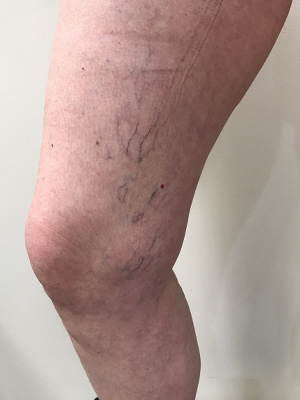
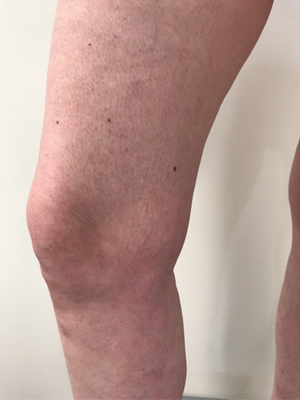
Here’s an example of treatment for spider veins. This 58-year-old patient had spider veins (telangiectasia) on outer and inner thighs. We treated with ultrasound-guided sclerotherapy and direct vision sclerotherapy and reviewed her case after 12 months. Here you can see signs of the condition have resolved.
Key Takeaways
- Spider veins are caused due to a flow-on effect from varicose veins located in nearby blood vessels.
- The treatment process sees a sclerosant injected into the problem vein. This substance then causes injury to the vein wall, leading to sclerosis of the vein. After the vein collapses inward on itself, it then hardens and heals. This means that your blood is automatically rerouted to your other healthy blood vessels.
- Sclerotherapy is a non-invasive treatment, carried out relatively quickly in our superb Melbourne and Sydney clinics.
